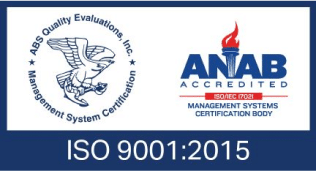
What the First Dash 8
Hydrogen-Electric Flight
Means for Aviation
The aviation industry is taking another big step towards sustainable air travel with the successful test flight of Universal’s hydrogen-electric system on a De Havilland Canada Dash 8-300, nicknamed Lightning McClean.
Hydrogen fuel cells are a pivotal advancement for electrical power flight. As the technology is developed further, larger aircraft and longer flights could be electrically powered. This trailblazing trial marks a critical juncture, as the aviation sector strives for sustainable air travel.
The Dash 8 Hydrogen-Electric Power Test Flight
Universal’s hydrogen fuel-cell propulsion system was tested during a 15-minute flight, from Moses Lake in Washington, on March 2, 2023, by Universal Chief Test Pilot Alex Kroll, a former U.S. Air Force test pilot, and Michael Bockler, an experienced Dash 8-300 pilot. In this initial flight, the right-hand Pratt & Whitney PW127 engine was retrofitted with a megawatt-scale hydrogen fuel-cell propulsion system.
The trial monitored temperature and voltage output to the electrical motor, and it’s looking promising so far. The aircraft reached an altitude of 3,500 feet and the test pilots were able to throttle back the PW127 engine to cruise on the hydrogen power. The pilots also noted significantly lower noise and vibrations than from a conventional turbine engine. This added benefit may help to get the public ‘on board’ when hydrogen-electric power is rolled out to passenger flights.
Universal Hydrogen’s Dash 8 hydrogen-electric power test flight was the largest hydrogen fuel cell-powered airplane to fly to date, however, it was not the first. ZeroAvia tested their hydrogen-powered Dornier 228 aircraft at Cotswold Airport in the UK, six weeks earlier. Healthy competition drives new technology to push the boundaries of what’s possible!
The Engine that Powered the Dash 8 Hydrogen-Electric Flight
The power unit behind the successful Dash 8 hydrogen-electric flight was the magni650 electric propulsion unit (EPU) developed by magniX. This engine is already used in smaller aircraft and can effectively harness any electric source, a game-changer for the industry.
The powertrain was installed in a modified nacelle with large air inlets on either side to cool the fuel cells. The hydrogen fuel cell system was supplied by Plug Power, and AeroTEC, a Seattle-based firm, created the modified nacelle. The hydrogen fuel cells used two large hydrogen tanks, each with 30 kg of fuel.
As the fuel cells use only hydrogen and air to produce electrical power, there are zero emissions, and the only by-product is water. A hydrogen-electric system represents a significant breakthrough in sustainable aviation and has the potential to drastically reduce the carbon footprint of the industry.
Universal’s Hydrogen-Electric Power Journey
Universal Hydrogen, based in California, was founded in 2020 and is passionate about revolutionizing the aviation industry. In February 2023, Universal Hydrogen was granted a Federal Aviation Administration (FAA) experimental airworthiness certificate for the Dash 8 test hydrogen-powered flight.
The focus so far has been to modify ATR 72s and Dash 8s with a hydrogen-electric system. By mid-2024 Universal Hydrogen intends to test-fly a modified ART 72 with hydrogen-electric propulsion on both sides. Universal Hydrogen hopes to obtain its first supplemental type certificate in two years. The plan is to roll out hydrogen-electric powertrain conversion kits for regional aircraft by 2025. Universal Hydrogen already has orders for almost 250 conversions.
Universal Hydrogen then aims to move on to the single-aisle sector. This is where the most significant benefits could be made to best meet the Paris Agreement emissions reduction targets. By the late-2020s, Universal Hydrogen plans to begin delivering conversion kits for auxiliary power in larger, single-aisle aircraft, with the ultimate goal of transitioning to hydrogen fuel as the primary source by the mid-2030s.
While the current test system uses hydrogen in gas form, future developments will likely use liquid hydrogen. The company is therefore also specifically designing liquid hydrogen storage modules. These modules have already been ground tested on a modified ATR 72-600 at the Universal Hydrogen’s facility in Toulouse, France. It is expected that the Dash 8 test aircraft will fly on liquid hydrogen by the end of 2023.
Challenges for Hydrogen-Electric Powered Aircraft
The path toward a hydrogen-electric powered aviation industry is not without its obstacles. The certification process for hydrogen aircraft, as well as the safety and reliability of cryogenic fuel storage, distribution, and combustion technologies, all present significant challenges. As does the task of establishing viable fuel logistics systems that can support airports worldwide. So far, test flights and logistical trials are promising.
Universal Hydrogen is confident in the safety of its liquid hydrogen modules. The hydrogen fuel tanks are designed with a relief valve that automatically releases any build-up as water. This mitigates the risk of exposed flammable gas.
To make the transition to hydrogen aviation more practical and cost-effective, Universal Hydrogen has a modular delivery system. This will eliminate the need for costly new hydrogen infrastructure at airports. The company is spearheading the development of a hydrogen fuel distribution network. This network is based on hydrogen fuel tanks (or modules) which are highly portable. The system would utilize any airport’s existing freight or cargo infrastructure to transport batches of hydrogen fuel directly to the airport tarmac. The fuel tanks can also be easily returned in the same way and refilled, with any unused hydrogen recycled.
There is also a pressing need to reinvigorate public opinion of aviation as a leader in technology, and as an industry that is set to meet, and hopefully exceed sustainable development targets. Hydrogen-electric power may be one way forward, but this will rely on passenger acceptance of hydrogen fuel in air transport.
Key Takeaways for Electric Powered Flight
The successful test flight of the modified Dash 8 not only demonstrates the immense potential of hydrogen-electric power but also signals a new era of sustainable air travel. With a growing demand for environmentally friendly solutions, hydrogen-electric power may be part of the solution.
Speaking of power solutions, if you are looking for efficient, robust, and cost-effective ground power for jump starting your aircraft, StartPac leads the way in the newest and safest Ground Power Units (GPUs) and has a wide range of portable and mobile units.
There are different GPUs for different aircraft, as well as different situations. The unit we recommend for a Dash 8 would be either the Li2800QC or 6028QC to carry on board for engine starts in remote locations, or the 3328 Special to use for a few daily engine starts at home base. If you have a busy airport and are needing to cool or heat the cabin before people board, conduct higher draw maintenance work for the electrical systems, or do many daily repeated engine starts, the GREEN will meet these needs too. Contact us to discuss what unit is best for you – we are here to keep you flying.


